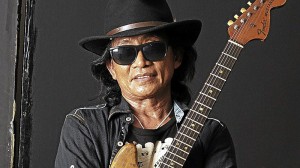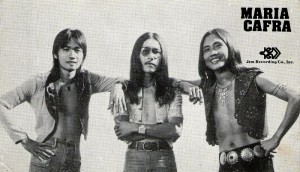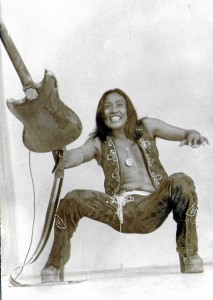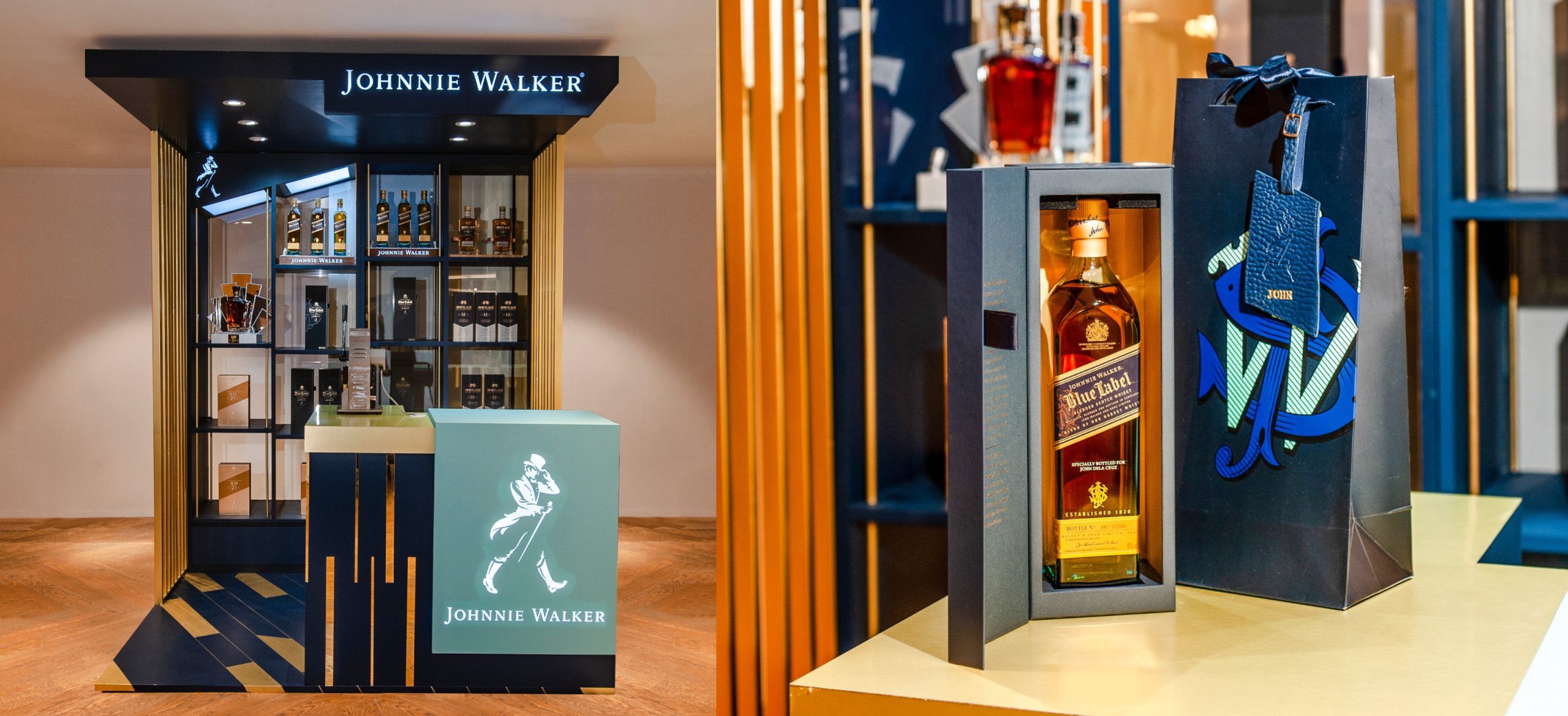
One of the greatest rock ’n’ roll shows I ever saw, bar none, happened in 1971.
I was a high school junior, your typical long-haired pre-Martial Law pseudo-hippie, and completely under the sway of Cream, Led Zeppelin, and the wildest of them all, Jimi Hendrix, who had just gone to an early grave the year before.
I don’t remember how it happened, but somehow someone had booked the Psyclones to play at our school. Since we didn’t have an auditorium big enough, the concert took place in the adjacent church.
Even in those days before the Internet, we knew the best bands in the land came from Olongapo City, and the best band in Olongapo was, without a doubt, the Psyclones.
As early as 4:20, we started getting psyched for the show, but nothing could have prepared us for what happened that night. The band was a power trio – just guitar, bass and drums – but they created a huge wall of sound that completely engulfed the audience as they ran through their set. By the end of show we were completely dazed and confused, and screaming hysterically for more.
That’s when Resty Fabunan, the Psyclones’ lead guitarist, pulled out all the stops.
The band’s showstopper grand finale was a Hendrix medley, with “Purple Haze” segueing into the anti-war Woodstock anthem “The Star Spangled Banner.” As if channeling Jimi, Resty produced a massive sonic onslaught, complete with dive-bomber riffs and machine-gun notes.
He didn’t just play his Fender Mustang, he stroked it, caressed it, kicked the hell out of it, and rode it like a rodeo pony, making it moan or scream with a virtuoso flourish. Finally, in a bizarre sacrifice to the departed spirit of the Voodoo Chile, he took out a can of lighter fluid, poured the contents on his guitar, and set it ablaze. Then he continued to play it as it burned. Holding it aloft by the whammy bar, he carpet-bombed the audience with feedback and noise like a B-52 dropping napalm on North Vietnam.
We were marked for life, but it was just another night’s work for Resty and the boys.
The following year, Martial Law was declared. There would be no more rock concerts in our church, not after the pagan rites – not to mention the fire hazard –witnessed by the good Capuchin friars who ran our school.
Three or four years later, a new kind of music was heard on the radio. People were calling it “Pinoy rock,” and one of the top acts was a band from Olongapo City called Maria Cafra.
 Resty Fabunan was born 63 years ago in Balanga, Bataan, the third of seven children. His father made ends meet by working as a carpenter, building contractor and all-around handyman.
Resty Fabunan was born 63 years ago in Balanga, Bataan, the third of seven children. His father made ends meet by working as a carpenter, building contractor and all-around handyman.
Life was tough, but there was always music around the house. His father had played bass guitar in a rondalla, and his mother had been a singer during “Peacetime.”
By the time he was eight, Resty knew his way around a ukulele, graduating to a six-string acoustic guitar by the time he was in sixth grade. He also joined amateur singing contests.
In the 1950s, barrio youth would form “combos” with whatever instruments they could find or make. Kerosene drums were turned into a one-string bass. Resty remembers joining one such outfit as the crooner, singing songs like “Rock Around the Clock.”
Always serious about music, he took up the trumpet in his early teens, and was soon playing for peanuts with the Balanga Brass Band.
“Kami yung naghahatid ng patay sa sementeryo [We provided music during funerals],” he recalls.
There was no living to be made from music in Balanga, however, and Resty soon looked toward Olongapo City, already a mecca for aspiring musicians.
“Lumuwas ako sa ’Gapo, hinahanap ako ng tatay ko. Nalaman na lang niya tumutugtog na ako sa club [I moved to Olongapo. When my dad finally tracked me down, I was already playing in a club].”
The Vietnam War was already underway when Resty found himself on Magsaysay Ave. in 1963, guitar case in hand. Subic Naval Base was an important R and R stop for American troops, and numerous nightclubs sprouted along Magsaysay and Rizal Avenues just outside the base, featuring Filipino bands playing note-perfect versions of Beatles songs, radio hits by the likes of Trini Lopez, and country-and-western songs.
After weeks of scuffling on the streets, he had been picked up by a band of oldtimers, relics from the big band era. It was a step up, but not by much. Resty made 50 centavos a day, just enough for a steady diet of bread and water. He slept on a bench in the club.
Eventually, Resty left to join a bunch of younger musicians in a Beatles cover band. They caught the attention of the manager of Ocean’s 11, a joint on Magsaysay Ave., who dressed them in Sgt. Pepper outfits and advertised them as “The Beatles of Olongapo.” They called themselves the Cyclones.
“Gustung-gusto kami, lalo na ng mga British,” says Resty. They especially liked it when he played the trumpet on “Sgt. Pepper’s Lonely Hearts Club Band.”
But the world was changing fast, and the music with it. By 1968, the Vietnam War had escalated and Olongapo City was jumping every night with hordes of battle-fatigued US servicemen out for one last good time before heading back to the slaughter. Scores of clubs opened catering to US servicemen’s varied tastes. One section of nightclub row was called “the Jungle,” and featured soul and rhythm and blues bands playing for a hardcore black audience. Further off was a block of clubs devoted to “shitkicker” music – country and western – for the rednecks.
In the middle were the premier clubs where the stars played, bands such as the Jovials, the Frictions, Our Daily Bread, the Soul Jugglers and of course the Cyclones.
“Umuusok ang Olongapo noon [Olongapo was smoking hot],” recalls Resty.
The Beatles weren’t cutting it any more. Fresh from the ’Nam, the troops were clamoring for the newer, harder psychedelic sounds purveyed by the likes of Cream and the Jimi Hendrix Experience, the only music that could soothe minds blown by the war.
Resty recruited his brother Jun to play bass, and added drummer Rollie Averilla to form a new power trio. He rechristened his band the Psyclones – a nod to the more progressive direction his music was taking – and took up residency in D’Wave, one of the premier Olongapo clubs.
They soon became the band to see in Olongapo, as word spread about their wild, raucous sets in which Resty tossed off Cream and Hendrix numbers with aplomb. One time, after an American fan spiked their drinks with some unknown chemical, the band launched into an epic, nonstop jam that lasted eight hours, from 5 p.m. to midnight.
The Psyclones were bona fide rock stars. Appreciative fans showered them with gifts, which often took the form of greenbacks, recreational chemicals or new rock LPs. They were surrounded by groupies-not the usual hardened Subic City “three-holers” working at the clubs, but sweet nubile young things, many of them the children of civilian base personnel.
Resty was not immune to the charms of the barely-legal “Amerikana” who hung around the band, nor to the lure of the hard drugs that servicemen were bringing back from the States or the ’Nam, everything from blotter acid to Udorn buds to black opium from the Golden Triangle. But he had an instinctive feel for his limits, and when he began to notice that his playing was beginning to suffer, he would pull back and head home to Balanga, away from the scene, for a rest cure.
The Psyclones also brought the hard-edged Olongapo sound to Manila, where Resty met cohorts like Joey “Pepe” Smith of the Juan de la Cruz Band and the late Edmond Fortuno of Anakbayan. And while he was on friendly terms with the cream of the Manila bands, he would often blow them off the stage with his wild man routine and sheer guitar chops.
By 1973, however, people were searching for a new sound. The Juan de la Cruz Band had released “Himig Natin,” giving birth to what would eventually be called Pinoy rock. Resty was approached by two radio DJs, Howlin’ Dave and Bob Magoo, who asked him if he had any original material that they could record and play on their show, “Pinoy Rock and Rhythm,” on DZRJ.
As it turned out, Resty had been stockpiling material, in Pilipino.
“Sabi ko, kung sasali tayo sa Pinoy rock, kailangan Pilipino din ang pangalan natin [I felt that if we wanted to go into Pinoy rock, we had to be known by a Filipino name],” he recalls.
Drawing on childhood memory, Resty came up with Maria Cafra, the name of a bird that he used to hunt with his older brother back in Balanga.
“Malikot na ibon na patalun-talon sa sanga,” he says. “Maganda ang buntot noon, parang peacock. Noong araw, sa matatanda, pag sinabing Maria Cafra ibig sabihin malanding babae.”
In short order, the band was signed on by Vicor Records, their self-titled debut album was released, and the radio was soon playing hit songs like “Kool Ka Lang, Pare,” “Estranghero,” “Kapalaran,” “Tayo’y Mag Rock & Roll” and “Buhay Gapo.”
Back in Olongapo, Maria Cafra started adding original material to their sets of rock standards. Their club gigs also grew wilder when Resty, emulating his hero, started burning his guitar after playing Hendrix’s version of “The Star Spangled Banner.”
In keeping with Maria Cafra’s new, nationalistic stance, however, the American anthem was soon replaced by Resty’s instrumental rendition of “Exodus” as the band’s finale number. In Resty’s hands, the corny old chestnut from that Holy Week perennial “The Ten Commandments” was transformed into a feedback-drenched tour de force that evoked not so much Charlton Heston playing Moses, but Jimi Hendrix’s scorched-earth “Star Spangled Banner” from Woodstock.
Despite its subliminal message [“This land is mine…”], the Americans lapped it up. After the guitar burning, audiences would hoist Resty on their shoulders like some football hero after a touchdown back home.
(Meanwhile, back in Manila, some hapless wannabe tried to imitate Resty’s act at a concert. However, he used gasoline instead of lighter fluid, and ended up burning his face off.)
By 1975-76, Maria Cafra was at the peak of its success. Unfortunately, Resty’s rock star status also made him more visible to the wrong elements. One night, after playing his usual club set, he was met not by the usual “’Kano” but by CANU, the Constabulary Anti-Narcotics Unit. Somebody had squealed.
They found Resty’s walking-around stash-two kilos of weed, some amphetamines and a balisong (fan knife).
He spent the next eight months behind bars in Camp Crame.
“Pag laya ko iba na ang tugtugan [When I was released, the music had changed],” he recalls.
While he was languishing in jail, Pinoy rock had begun to mellow. A new wave of artists whose roots were in folk music rather than rock ’n’ roll had emerged, among them Asin and a skinny longhair who had hung around Resty in Olongapo named Freddie Aguilar.
Resty was having none of that, however. He had eight months of pent-up frustration to express. The result was “Ikalawang Yugto,” Maria Cafra’s second album on JEM records.
The radio single “Kumusta Mga Kaibigan” was Resty’s brash announcement that he was back. The other single, a version of the traditional song “Sarungbanggi,” hinted at Resty’s bluesier side.
By then, the first era of Pinoy rock was over. The Manila sound, epitomized by bands such as Hotdog and Cinderella, had taken over the airwaves with its radio-friendly bubblegum pop. The original pioneers such as Juan de la Cruz and Anakbayan had either broken up or were on hiatus.
After the end of the Vietnam War, Olongapo had settled into a feast-or-famine economic cycle. When the fleet was in, the good times rolled. When the boats left, it was back to hard times.
Maria Cafra soldiered on, but Resty’s heart wasn’t in it. It wasn’t just the music that had changed, however. He had, too. The endless grind of doing cover versions night after night, the Gapo musician’s bread and butter, had taken its toll. He was burned out.
He had married and started a family, and was putting more and more of his energies into running the club he had started with his wife, the El Grande Mug Haus.
By 1983, Maria Cafra finally called it quits, and Resty put his guitars in storage. The final nail in the coffin was the eruption of Mt. Pinatubo in 1991, which blanketed Olongapo City and Subic in a shroud of ash. The following year, Subic Naval Base closed down, and Olongapo as Resty Fabunan knew it was no more.
“Umani kami ng buhangin,” he says.
“Dapat ang tawag sa amin endangered species,” laughs Resty as he takes out his battered vintage Fender Mustang, worn down to bare wood from decades of abuse and countless onstage immolations.
He is surprisingly trim and energetic for 63, a fact he attributes to regular exercise at the gym and a largely vegetarian diet.
Resty is as amazed as anyone at the return of Maria Cafra, after a hiatus of more than 25 years.
“Sarado na ang isip ko,” he says. “Akala ko wala na ako [I thought we were done for].”
Jun Fabunan, Resty’s brother and Maria Cafra’s original bass player, died of a heart attack in 2002. Appropriately enough, he died onstage, jamming with a group of doctors.
It was Jun’s son Dennis, who had followed in his father’s footsteps and had been the bass player for the Wuds, who was instrumental in luring Resty back from retirement.
“Dalawang taon din akong niligawan ni Dennis,” says Resty. “Sabi ko, ayaw ko na, frustrated na ako sa industriya ng musika.”
Finally, after several months of wheedling, and a promise to manage the band, Resty gave in and finally took his guitars out of storage. Rollie Averilla was still around, and with Dennis on bass, Maria Cafra slowly lurched back to life.
It took six months of intensive woodshedding, however, before Resty got his chops back to the kind of shape he needed to play the old songs again.
The hours of daily practice paid off when Maria Cafra took the stage at RJ Bistro in October of 2009. The audience was a sea of balding pates and middle-aged paunches. Many had seen Maria Cafra play the New Moon concerts at the Folk Arts Theater and Araneta in the late ’70s, and had never forgotten.
It only took the opening bars of “Kumusta Mga Kaibigan” for them to realize that Resty was back. After the set, Resty was deluged with autograph hunters, many carrying dog-eared copies of the original Maria Cafra LPs and cassettes for him to sign.
“Ay salamat,” says Resty. “Akala ko yun na. Akala ko nakalimutan na ako. Meron pa palang nakakatanda.”
More importantly, he realized that the old spark was still there.
Today, Resty is eager to get back in the groove. He can still outplay musicians a third his age, and he can still write songs. Not surprisingly, he shares the same management with his old cohort, Joey Smith, who has himself undergone a renaissance of sorts with a TV reality show and a movie in the works.
The boys are back in town.









































